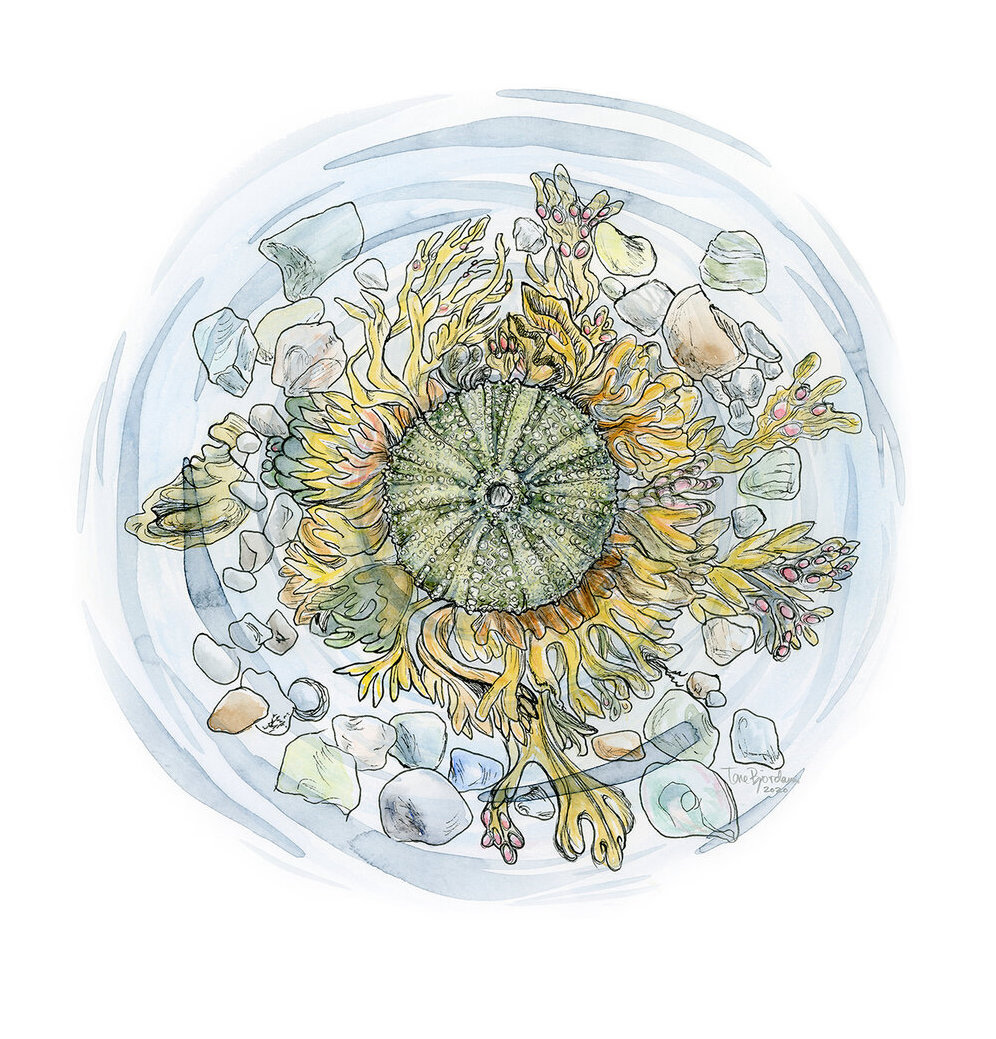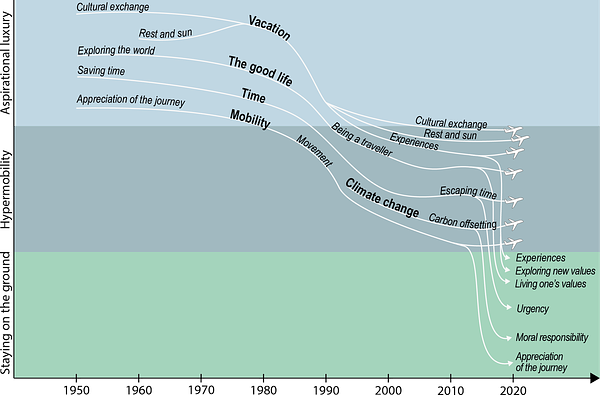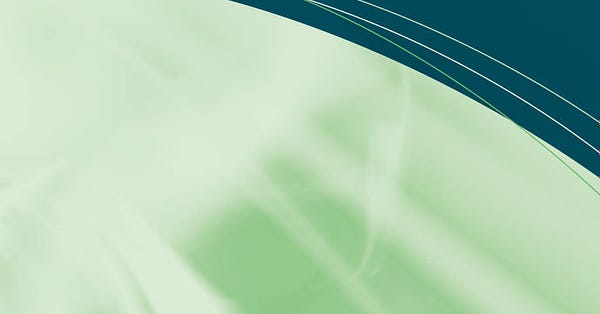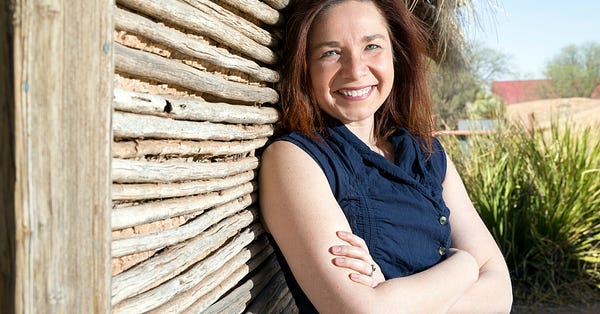🌿Wild Ones #53: Environmental Communication Digest
Environmental keyword: The Phonocene + Media Hot and Cold + A Documentary on language, power and activism + more!

Hi everyone, welcome back to Wild Ones! I took a little break from the digest while making an international move and getting settled in a new country (Hawai‘i → Norway). But I’m happy to be in Oslo now for a new postdoc position! I’m looking forward to getting back to this weekly digest, sharing news, ideas, research, and tips in environmental communication! If you’re new, welcome! You can read more about why I started Wild Ones here. And if you’re not already signed up, you can click here to get these digests in your inbox:)
🌲 Environmental Keyword
‘Phonocene’
“The fact of inscribing our time under the sign of the Phonocene…is not to forget that when the earth rumbles and squeaks, it is because it also sings. It also means not forgetting that these songs are disappearing, but that they will disappear even more if we do not pay attention to them…”
“The Phonocene” is “the era which connects us to the power of sound.”
– Vinciane Despret, in ‘Living as a Bird’ (Habiter en Oiseau) (2022/2019).
In addition to ‘the Anthropocene,’ there seem to be a lot of ‘-cenes’ flying around as proposals to rename our current moment of global environmental crisis – Capitalocene, Plantationocene, Hellocene, Manthropocene, Misanthropocene, Anthropo-not-seen, Planthroposcene, and even the Trumpocene, to name just a few. Some have even documented up to 80 - 90 proposed names for our new era.
But do we really need another '-cene’, like the Phonocene?
One reason to think so is that different ‘-cenes’ offer different ways to frame – foreground and background – different dimensions of our social/political/ecological emergency.
From this perspective, the question isn’t so much how scientifically accurate a particular ‘-cene’ is (as is often the case with debate about the Anthropocene), it might be more helpful to ask: What communicative purpose does a particular ‘-cene’ serve, and for whom?
For example, for environmental communicators I think it’s useful to consider how framing an environmental issue through the lens of a particular ‘-cene’ can be helpful for foregrounding different aspects of the complex socio-ecological crises proliferating around the earth.
Environmental geographer Jamie Lorimer in his 2017 article, The Anthropo-scene: A guide for the perplexed, puts it like this:
“It is useful to understand the concept of Anthropocene [and any other -cene for that matter] as a ‘boundary object’ (Star, 2010) or a ‘charismatic mega-category’ (Reddy, 2014) that enables new conversations and collaborations across significant forms of epistemic difference.”
Here’s a blurb from a recent dialogue between philosophers Vincianne Despret and Donna Haraway about their conception of “The Phonocene” and why introducing the term is important:
“This dialogue [on the Phonocene], according to Haraway, is not about “us”, it is about the world, about all the non-human voices that we had ceased to hear but which, due to lockdown, many of us have rediscovered. The imposed silence, she says, has allowed us to hear the sounds, and this is the first step towards trying to generate a more plural “us” that is meaningful to a personal journey.”
In the video below (French w/English subtitles), environmental philosopher Vinciane Despret describes how the Phonocene helps bring attention to ‘non-human voices’ that often get silenced, and what communicative purpose the new name could serve in re-imagining human relations with the more-than-human world:
Some postcards from the Phonocene:
Sonic Antarctica by Environmental Sound Artist Andrea Polli: "Sonic Antarctica" features natural and industrial field recordings, sonifications and audifications of science data and interviews with weather and climate scientists.”
Sanctuaries of Silence: An immersive listening journey: “Silence just might be on the verge of extinction, and acoustic ecologist Gordon Hempton believes that even the most remote corners of the globe are impacted by noise pollution.” – in Emergence Magazine
A quote by Rachel Carson from her 1965 book, The Sense of Wonder:
“Senses other than sight can prove avenues of delight and discovery, storing up for us memories and impressions…Hearing can be a source of even more exquisite pleasure but it requires conscious cultivation….Take time to listen and talk about the voices of the earth and what they mean—the majestic voice of thunder, the winds, the sound of surf or flowing streams.”
I was introduced to this idea of the Phonocene in a fantastic writing workshop a few weeks ago led by multispecies scholar Thom van Dooren.
📚 What I’m reading
“You Matter More Than You Think: Quantum Social Change for a Thriving World,” (2021) by Karen O’Brien, Professor of Human Geography at the University of Oslo in Norway. Here’s a blurb of the book from environmental geographer Noel Castree: "Karen invites us to rethink what it means to be a living, thinking agent in our hyper-complex and troubled world. It's a hopeful book about our capacity to enact progressive change in the face of global challenges."
The Unseen as Fertile Ground for New Wisdom, by Vivien Sansour, in Mold Magazine. Vivien is the founder of the Palestine Heirloom Seed Library 2020-21 Religion, Conflict, and Peace Initiative Fellow at Harvard University
“Many of my contemporaries have challenged my “romantic” notions to say that magic cannot buy us security and that an investment in things unseen is as scary as strolling in a minefield with a sense of denial that the earth beneath you will eventually explode. However, I have found the opposite to be true. It is in fact, our commitment to what we deem as reality that has rendered us fragile in a weak system that lacks brio and bravery.”
👀 What I’m Watching



🔍 Tools & Resources I’m exploring
This cool graph from a new paper tracing how discourses about flying in Sweden have transformed since the 1950s, and how new ones – like the hashtag #JagStannarPåMarken (#IStayOnTheGround) and flygskam (flight shame) – have emerged in recent years:


📚 Research


“The Low-Carbon Research Methods Group is a loosely affiliated network of scholars interested in examining how climate change not only stands to alter what we study, but how we do so.Its founding hypothesis is that an energy transition for academic methods—like energy transitions everywhere—offers opportunities to re-examine long-held assumptions and to redistribute benefits and harms (for both good and for ill).”
“Media Hot and Cold” (2021) by Nicole Starosielski, Associate Professor of Media, Culture, and Communication at NYU.
“In Media Hot and Cold Nicole Starosielski examines the cultural dimensions of temperature to theorize the ways heat and cold can be used as a means of communication, subjugation, and control.” Read the introduction #freeaccess (PDF).
💡 Ideas
It’s Not Science Fiction, Bill McKibben. “In Kim Stanley Robinson’s anti-dystopian novel, climate change is the crisis that finally forces mankind to deal with global inequality.”
What’s in the Glasgow Climate Pact? And what isn’t in it but should be? By Tina Gerhardt in Sierra Magazine.
On Mistaking Whales, by Bathsheba Demuth, Assistant Professor of History and Environment and Society at Brown University:
“Before a gray whale becomes a home, or a barrel of oil, or a metaphor, before she enters the realm of human meaning, she is a being complete in herself. Born as most gray whales are on an early January day off northwestern Mexico’s Baja Peninsula, her mother swims upside down, tail lifted, straining up, up, and she emerges head first not into water but into the air. Two thousand pounds of smooth pewter muscle born facing the sky. For the next three months, she practices pacing her breaths, the rise to the surface that keeps her from drowning in the water that is her home. In the calm lagoons, she grows more than a ton each month…”
An interesting thread from climate scientist Katharine Hayhoe on why she doesn’t bother arguing with climate ‘dismissives’:


💬 Quotes I’m thinking about
“That’s the ruling story on this planet. We live suspended between love and ego. Maybe it’s different in other galaxies. But I doubt it.”
― Richard Powers, Bewilderment
“The most influential messages of the twenty-first century will be sent not
through words and images but through heat and cold.”- Nicole Starosielski, in Media Hot and Cold.
Thanks so much as always for your interest in my work, and if you found this digest useful, please consider sharing with others who might find it interesting too😊 I'd also love to hear from you. Leave a comment to let me know what you think about this digest, what areas of environmental communication you’re involved in/most interest you, or anything you’d like to see more of in Wild Ones:)




